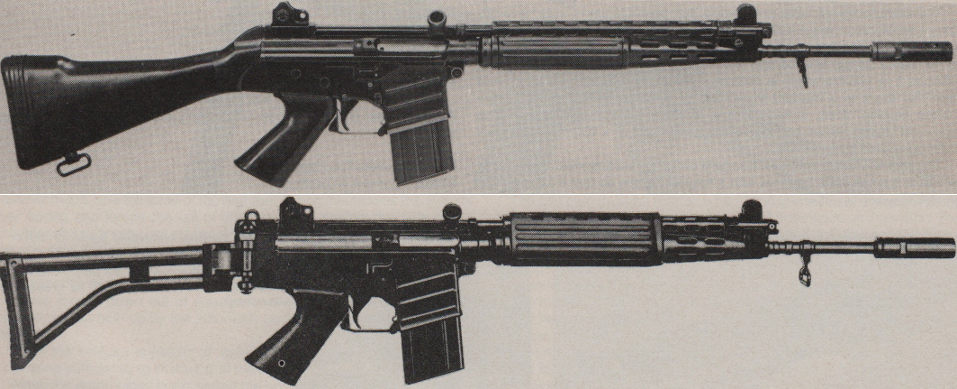Kiltonge
Greetings Earthling
- Joined
- 24 January 2013
- Messages
- 463
- Reaction score
- 621
There are many pages on the Web that mention this rifle, but few actually give any useful information other than it was "unreliable" or "unsuccessful".
From various Belgian and French sites here's what I've established so far:
EDIT: This page http://www.arme-a-feu.wikibis.com/fn_cal.phpclaims a rather more realistic 3.3 kg empty for the CAL, rather than the 3.0 figure listed by Jane's for many years.
* Amazingly, this trial also included the rare HK32 in 7.62x39 a well as its cousin the HK33 in 5.56x45. Prior to reading this in COMHART volume T8 / 1 I'd never found a reference to the HK32 existing outside H&K's pattern room.
From various Belgian and French sites here's what I've established so far:
- Produced from 1965 to 1972
- Either 15,000 or 30,000 produced ( no definitive number )
- Exported in series to Zaïre and Gabon EDIT: per the page I've listed below, also Lebanon.
- Claimed to have been seen in action in Libya in the past couple of years ( though I've only seen FN FNCs in photos, which have a similar foregrip and could be mis-recognised)
- Around two dozen were evaluated in the USA, presumably by the US Army?
- A small number were evaluated by the French Army in 1969 under project "FU 75" * wherein the CAL was judged inferior to the M16 and HK33.
- Production was discontinued by FN in preference to a new design, the FNC, based on the AKM's rotating lock, rather than the FAL's tilting block.
- The 'superior' FNC weighs-in at 800 g heavier than the CAL empty. No-one has really explained this rather significant difference other than the inherent weight of the AKM's locking mechanism.
EDIT: This page http://www.arme-a-feu.wikibis.com/fn_cal.phpclaims a rather more realistic 3.3 kg empty for the CAL, rather than the 3.0 figure listed by Jane's for many years.
* Amazingly, this trial also included the rare HK32 in 7.62x39 a well as its cousin the HK33 in 5.56x45. Prior to reading this in COMHART volume T8 / 1 I'd never found a reference to the HK32 existing outside H&K's pattern room.


